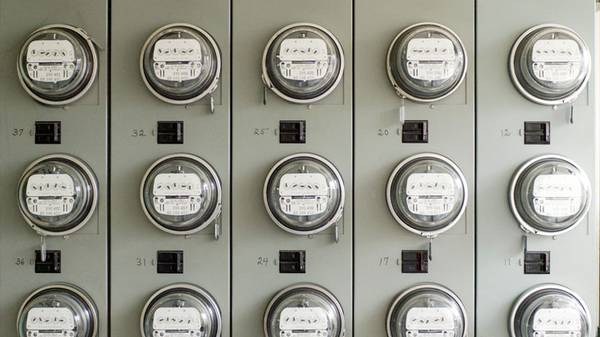- Share on Facebook
- Share on Twitter
- Share by Email
Efficiency is the guiding principle of the transport transformation.
The transport transformation will bring major changes to people’s everyday lives. A key aim of the transformation is to decarbonise the transport sector while using available resources – including human resources, energy, and money – as efficiently as possible. The transformation will pose technological challenges, but first and foremost it throws down the gauntlet to society. Its top priority – namely, efficiency – is likely to run up against the limits of public acceptance. And when it does, dogma must give way to compromise.36
-
The cheapest kilometre is a saved kilometre
Providing possibilities for people to satisfy their mobility needs without making long trips using motorised transport is the most efficient means of transforming the transport sector (as Insight 3 explains in more detail). For fewer kilometres travelled means less motive power, and less motive power means less energy generated and a lower environmental impact. Functional zoning (for decades the dominant paradigm in urban planning) and ongoing efforts to make far-off places easier to reach will not help. Restructuring for efficiency will require time and the political resolve to pass legislation that is no longer focused on eliminating obstacles to vehicle traffic.37
-
Digitalisation serves efficiency
Digital technologies and new business models can achieve advances in efficiency even in the short term. They limit environmental damage less through reducing the need for transportation or through shortening routes than by changing people’s behaviour.
Thanks to the digital networking non-motorised forms of transport, public transportation, and car- and ridesharing services, individuals now have a compelling and practical alternative to private vehicle ownership. Driverless vehicles can also have a positive effect on the environment, provided they are used efficiently. (For more on this, see Insight 5.) With digital technologies, these means of transport can be better utilised and the traffic system made more intelligent. This will also result in efficiency gains and economic growth, as illustrated in figure 2.1. -
Economical vehicles in demand
The efficiency rule also applies to vehicles (Insight 6), even if it does not suffice to achieve the aims of the transport transformation. According to EU law, energy efficiency is defined as “the ratio between performance output and energy input.”38 Accordingly, a vehicle engine with higher horse power but the same fuel consumption as its predecessor is more efficient. However, such an engine still emits the same amount of CO2. Thus, when it comes to vehicle technology, the efficiency rule must be supplemented by another: namely, the economy rule. To be sure, the transport transformation, if it is to succeed, requires light-weight vehicles built for low-energy use, not high performance and speed.
The economy rule also applies to battery-powered vehicles. It is true that electric motors are more efficient than combustion engines, but they do vary in the amount of electricity they use depending on their size, their output, their weight and so forth.
In China, compact electric cars with limited speeds, so-called low speed electric vehicles LSEVs, have seen a boom, with more than 600,000 units sold in 2015. These cars are small, flexible, inexpensive – and largely unregulated. They are more energy efficient than comparable vehicles powered by combustion engines, but they are less efficient than public transportation and two-wheeled vehicles.39 Whether they are suited for the German market is still uncertain.
Electric motorcycles are enjoying growing popularity as well. It is estimated that in 2015, there was more than a quarter-billion electric motorcycles on the road in China alone. In Germany, there are not nearly as many, with no more than 7,300 in use.40 The number of electric bikes is on the rise, however. Considerably more pedelecs were sold in 2016 than in 2015 (though the year-over-year growth rate has slowed). -
Efficient energy supply
Vehicles are tied to the energy that powers them. What is ultimately relevant for the climate is the level of CO2 emissions from motorised transportation – and not, for example, where they occur in the transformation of energy into power. The entire process is important from well to wheel. Vehicle efficiency (tank to wheel) and fuel production (well to tank) are, by themselves, insufficient measures for judging climate relevance. What really matters is the efficiency of the system (as discussed in Insights 6 and 7).
Electric motors are fundamentally more efficient than combustion engines, and they do not emit CO2 locally. But they are not CO2 neutral if their electricity is generated using fossil fuels. The share of renewables in the German electricity mix is now around one-third, and thanks to the government’s promotion of renewable electricity, it’s growing. As the share of electricity from renewables increases, electric-powered transportation will become more efficient and the amount of GHG emissions it creates will approach zero. Direct electricity use is the key for the transformation of the transport sector.
Should this option not be possible – whether due to technical reasons or due to lack of societal and political acceptance – other, less efficient solutions will have to be considered.
In such an event, internal combustion engines in road traffic cannot be ruled out, although they are less efficient than electric motors. Yet combustion engines are only an option for the transport transformation if GHG emissions are otherwise on a path toward zero. Even with the most ambitious forms of vehicle optimisation, drastic reductions in carbon emissions will only be possible through the use of carbon-neutral fuels generated from renewable electricity. But the production of electricity-based fuels itself requires a great deal of energy, making it significantly less efficient than direct electricity use (see Insight 7).
Carbon-neutral transportation with combustion engines, therefore, is at an efficiency disadvantage both in terms of well-to-tank and in terms of tank-to-well, which speak against their use. Their deployment for long-term climate change mitigation would only be acceptable under a regulatory framework that requires fuels for such vehicles to become gradually more carbon-neutral.

